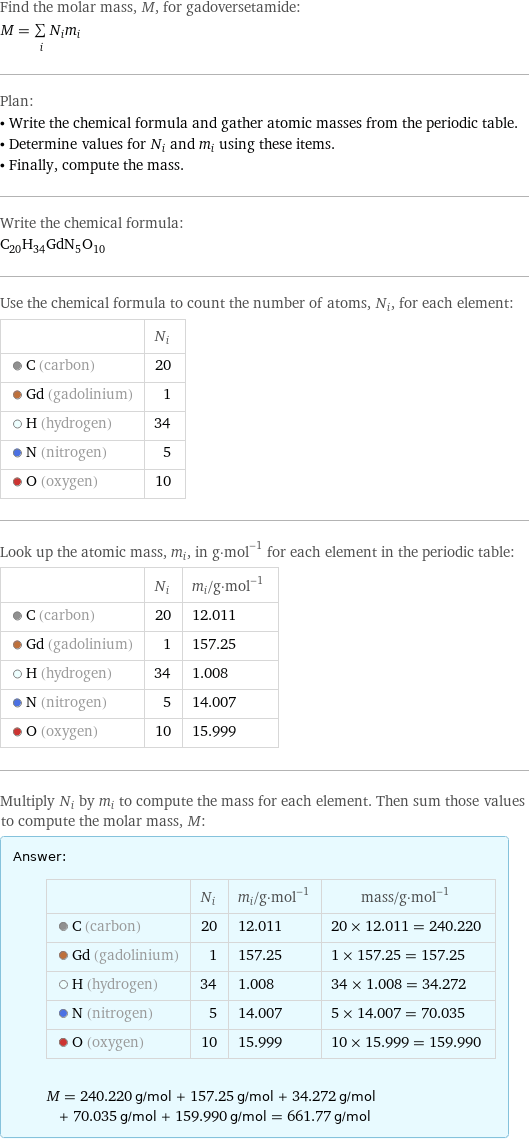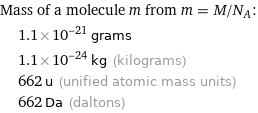Input interpretation

gadoversetamide | molar mass
Result

Find the molar mass, M, for gadoversetamide: M = sum _iN_im_i Plan: • Write the chemical formula and gather atomic masses from the periodic table. • Determine values for N_i and m_i using these items. • Finally, compute the mass. Write the chemical formula: C_20H_34GdN_5O_10 Use the chemical formula to count the number of atoms, N_i, for each element: | N_i C (carbon) | 20 Gd (gadolinium) | 1 H (hydrogen) | 34 N (nitrogen) | 5 O (oxygen) | 10 Look up the atomic mass, m_i, in g·mol^(-1) for each element in the periodic table: | N_i | m_i/g·mol^(-1) C (carbon) | 20 | 12.011 Gd (gadolinium) | 1 | 157.25 H (hydrogen) | 34 | 1.008 N (nitrogen) | 5 | 14.007 O (oxygen) | 10 | 15.999 Multiply N_i by m_i to compute the mass for each element. Then sum those values to compute the molar mass, M: Answer: | | | N_i | m_i/g·mol^(-1) | mass/g·mol^(-1) C (carbon) | 20 | 12.011 | 20 × 12.011 = 240.220 Gd (gadolinium) | 1 | 157.25 | 1 × 157.25 = 157.25 H (hydrogen) | 34 | 1.008 | 34 × 1.008 = 34.272 N (nitrogen) | 5 | 14.007 | 5 × 14.007 = 70.035 O (oxygen) | 10 | 15.999 | 10 × 15.999 = 159.990 M = 240.220 g/mol + 157.25 g/mol + 34.272 g/mol + 70.035 g/mol + 159.990 g/mol = 661.77 g/mol
Unit conversion

0.66177 kg/mol (kilograms per mole)
Comparisons

≈ 0.92 × molar mass of fullerene ( ≈ 721 g/mol )

≈ 3.4 × molar mass of caffeine ( ≈ 194 g/mol )

≈ 11 × molar mass of sodium chloride ( ≈ 58 g/mol )
Corresponding quantities

Mass of a molecule m from m = M/N_A: | 1.1×10^-21 grams | 1.1×10^-24 kg (kilograms) | 662 u (unified atomic mass units) | 662 Da (daltons)

Relative molecular mass M_r from M_r = M_u/M: | 662